The line between reality and fiction blurs easily in Cappadocia, a region in east-central Turkey. With a wild imagination the staggeringly tall rocky outcrops, pockmarked cliff sides and whimsical rock formations found here can be attributed to the handiwork of fairies and gnomes. But this fantastical landscape is the result of volcanic eruptions, numerous earthquakes, and years of erosion.

09:00 - Begin with a visit to Zelve-Pasabaglar archaeological site that draws visitors with its high concentration of ‘fairy chimneys’ – the mushroom-shaped rock formations that have become an enduring symbol of Cappadocia. Three (now extinct) volcanoes – Erciyes, Hasandag and Güllüdag – spewed out ash which hardened into tuff covered with a layer of basalt. Wind, rain, and ice gnawed away at the tuff leaving behind towers with conical caps. Early settlers figured out that the soft tuff can be easily dug into building homes, stables, and even entire cities. Look out for the three-headed fairy chimney that houses a chapel.
-txsrnm.jpg)
11:00 - At the 60-metre-tall Uçhisar Castle built atop a hill, get an orientation of the wider region. The massive stone mound is home to smaller cave dwellings connected by tunnels and passageways. At one time it is said that a 1,000 people lived here. Climb to the top for magnificent views of the surrounding villages, cultivated valleys and Mount Erciyes in the distance.
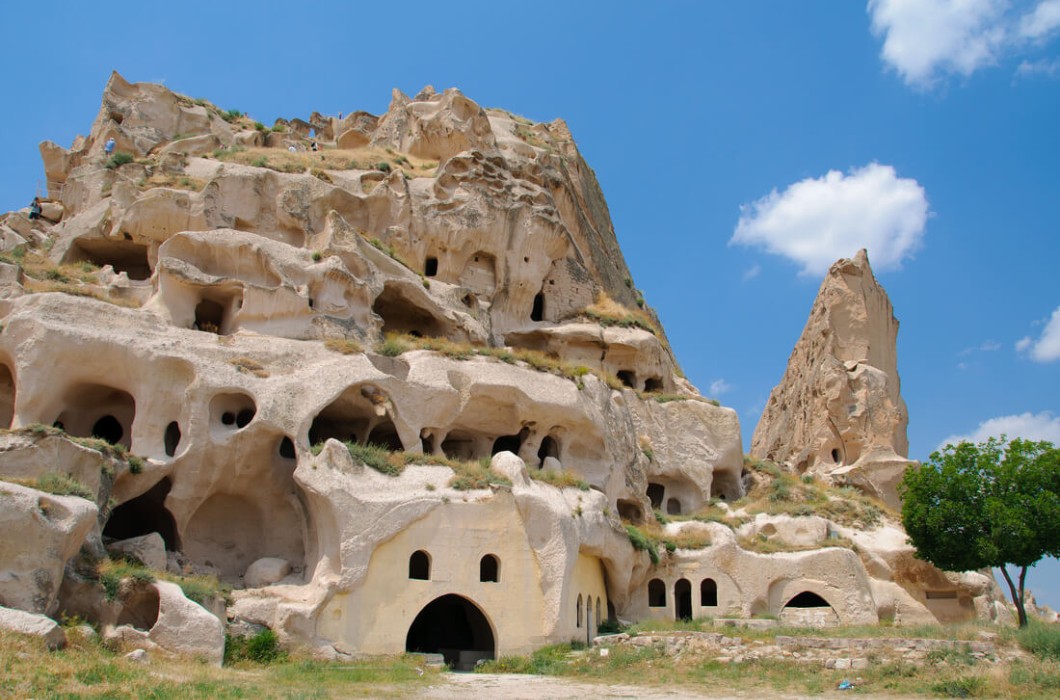
13:00 - Rest those feet and secure a table by the large windows in the stylish Millocal restaurant located in the shadow of Uçhisar Castle. The floor-to-ceiling windows bring the glorious outdoors in as you tuck into delicious Anatolian delicacies cooked with the finest of local ingredients. Named after an old bulgur mill found in the area, the restaurant bakes a variety of fresh breads using organic flour. Those giant pumpkins you have been seeing strewn across the farms make an appearance on your plate. Kabak tatlisi tarifi is a traditional Turkish dessert of pasta-like strands of pumpkin stewed in sugar syrup, served with a drizzle of tahini and topped with walnuts.
Kabak tatlisi tarifi is a traditional turkish dessert of pasta-like pumpkin strands stewed in sugar syrup.
15:00 - Along with its natural wonders, Cappadocia is also known for its unique craft heritage and most notable amongst these is Hittite pottery from Avanos. With 70 workshops you spend hours wandering in and out, but a good place to get acquainted with this age-old craft is the 200-year-old atelier of Sultans Ceramics housed in a cave. On a guided tour learn about Turkey’s rich ceramic heritage, watch demonstrations and even try your hand at making a vase. Of the many items on display, the curiously shaped Halkali Hittite jug with a gaping hole in the centre garners maximum attention. One of the great empires of the ancient Middle East, the Hittites were sun worshippers and believed that sunlight passing through the hole blessed the drink within. The cavity also serves as a great design addition, as it allows the pourer to slip an arm through and pour wine effortlessly.
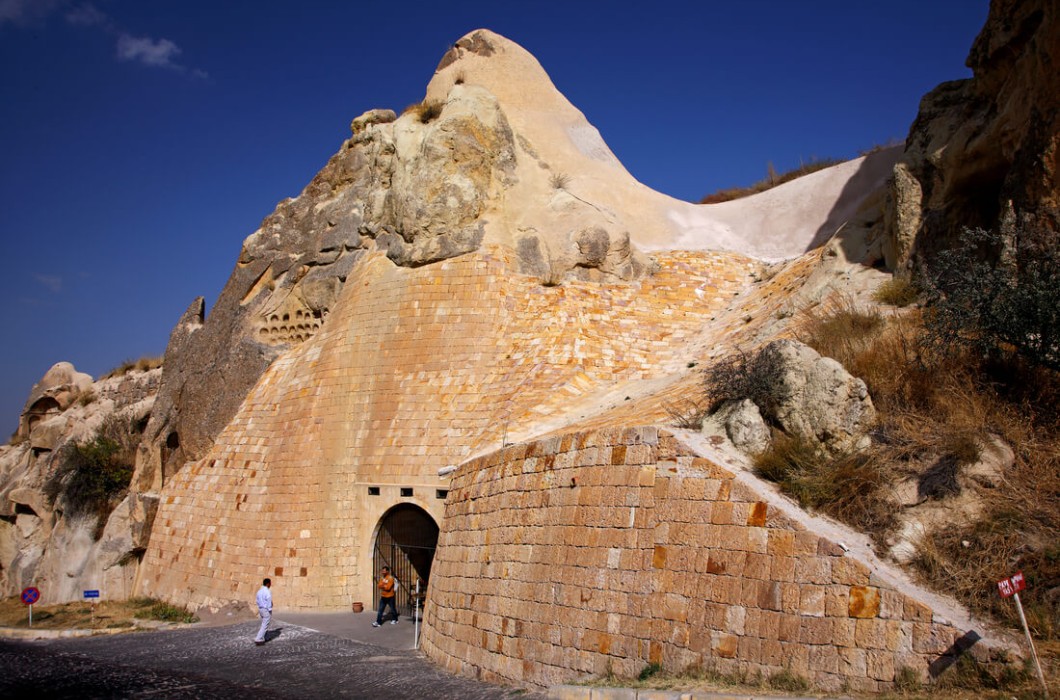
17:00 - As the day draws to a close just follow the crowds to the cliff’s edge in Red Valley and find a suitable spot to watch what’s considered to be the finest of sunsets in Cappadocia. It is common to see people bring chairs, flasks of tea and snacks to watch the spectacle unfold. As the sun turns into a giant orb gradually sinking into the horizon it burnishes the surrounding ravines red and gold.
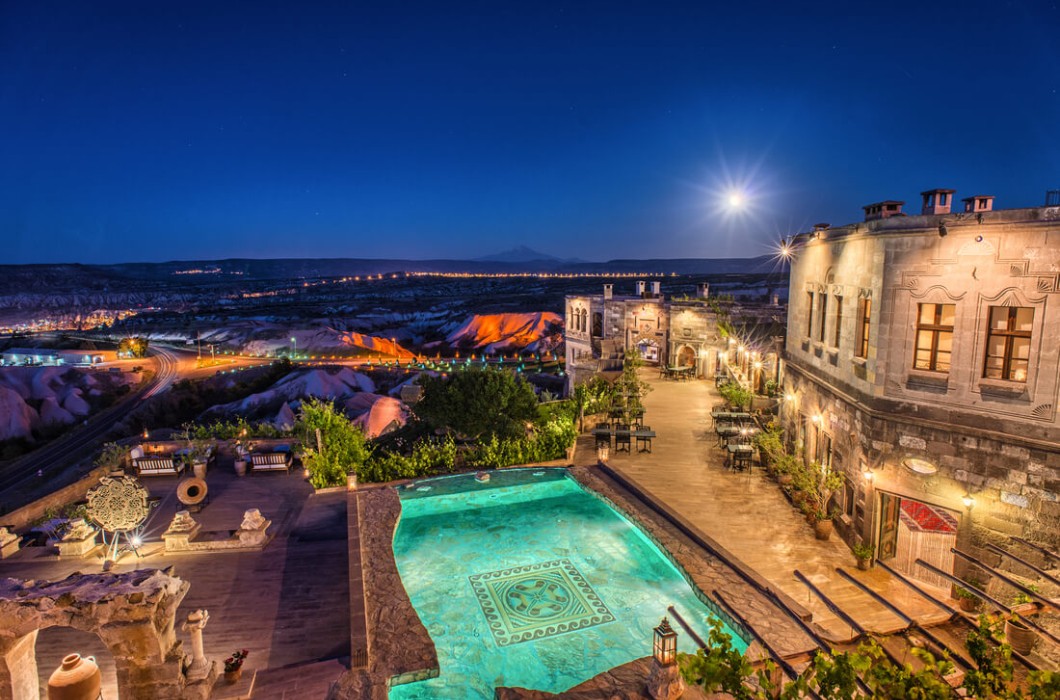
19:00 - Everything about Cappadocia is dramatic and the Museum Hotel sticks to the theme right down to the very last detail. The luxury 34-room boutique property – the only Relais & Châteaux hotel in Turkey – is owner Ömer Tosun’s pride and joy. The reception with its rich wood panelled ceiling, deep wine velvet sofas and stone arched windows that frame the outdoors perfectly, sets the tone for what lies ahead. Every nook and corner of the hotel is covered with valuable and priceless antiques collected by Tosun. Bedding down in the hotel’s restored cave rooms is special, as it is not every day that you sleep in a room that may have been home to Hittites, Persians, or Christian Romans. With nightfall make your way to Lil’a, the atmospheric in-house restaurant at the hotel’s expansive terrace. Tables are arranged under a grape vine covered wooden pergola and around the mosaic tiled swimming pool.
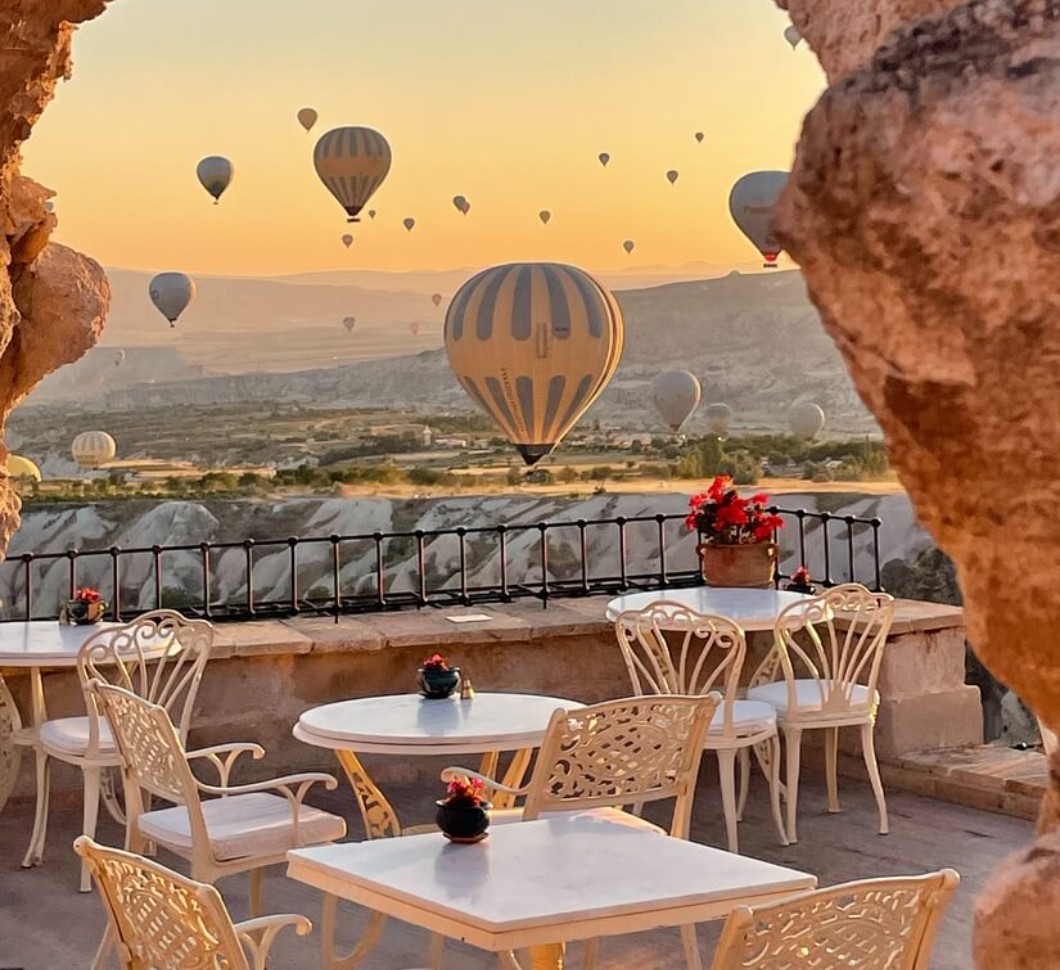
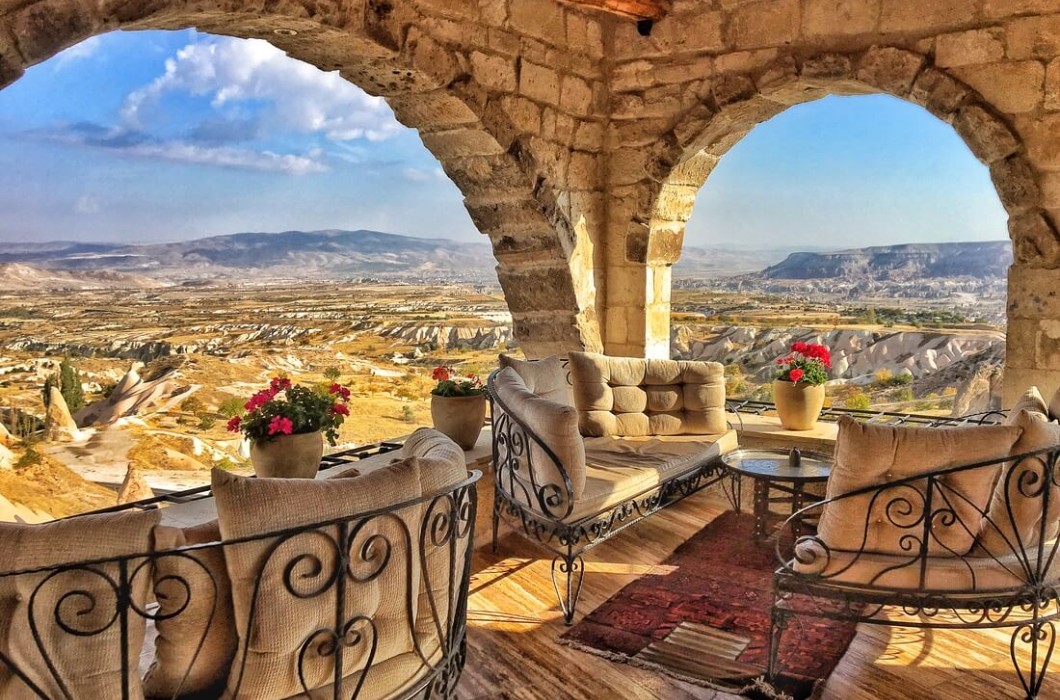
Diffused lighting and upbeat music set the right mood for chef Saygin Sesli’s exceptional food. It is all about Anatolian flavours and dishes that celebrate the region’s abundant produce. A grape producing region, sample local wines as you bite into – yaprak sarma or grape leaves stuffed with bulgur, rice, meat, tomatoes, and spices – one of Sesli’s favourite dishes. Young leaves of the grape plant are harvested around sunrise by hand from the hotel’s vineyards in the Love Valley. Whatever you eat, keep space for the restaurant’s signature dessert tatlı yahni – apricots, plums, figs and dates, stuffed with walnuts, stewed in pekmez or grape molasses. The soft, sweet fruits are served with a dollop of kaymak or clotted cream from the local village, that perfectly balances the flavours and textures.
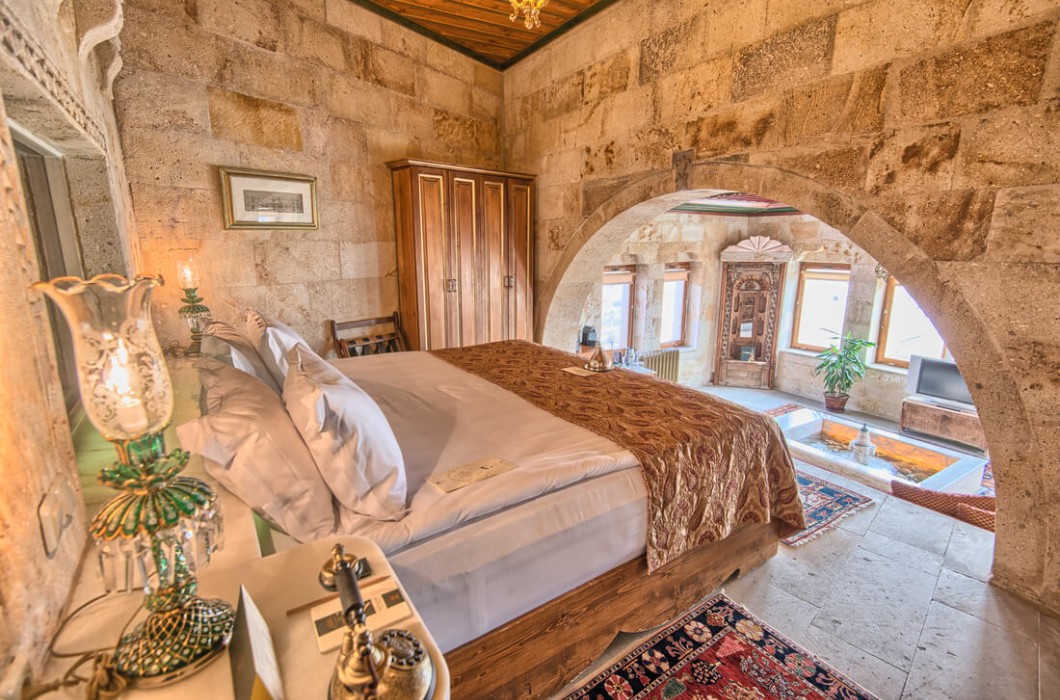
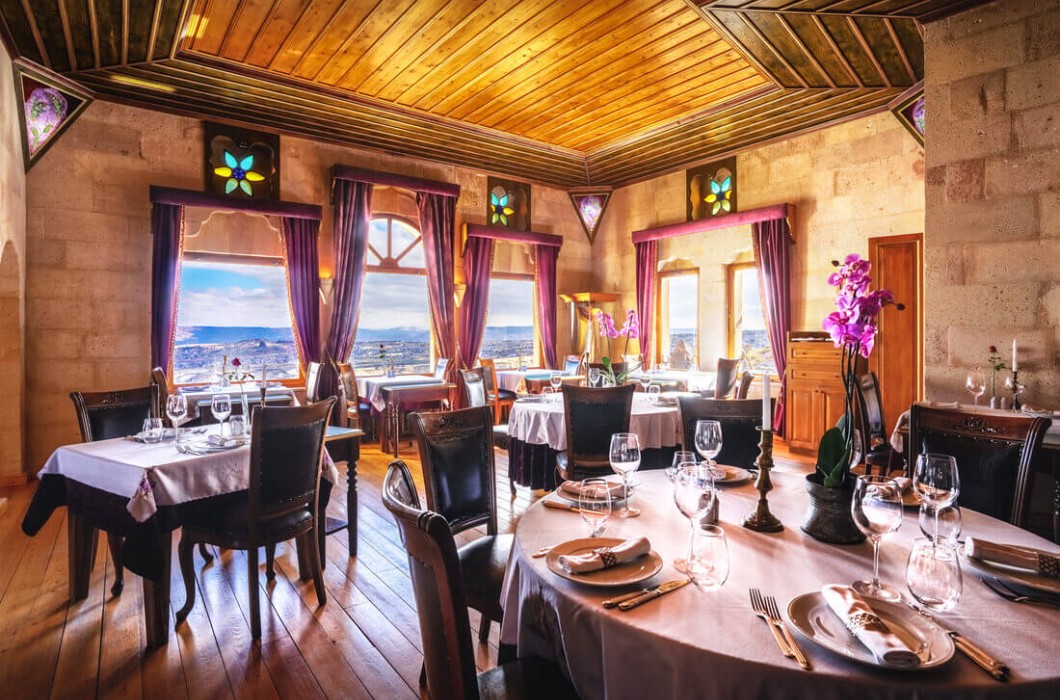
05:30 - Getting out of bed on holiday well before the crack of dawn takes considerable effort and doing so is only justified for something that is truly spectacular. Cappadocia’s famous balloon rides are the perfect reason and provide some of the most breath-taking sights, with the sky speckled as if with floating rainbows. If exploring this fantasy landscape on foot has been exhilarating, floating above vast open plains, vineyards, fields, and low-lying hills cloaked with what looks like icing dripping down the edges, makes for an unforgettable experience. Back on the ground enjoy the dewy morning and savour the once-in-a-lifetime experience with a glass of bubbly.
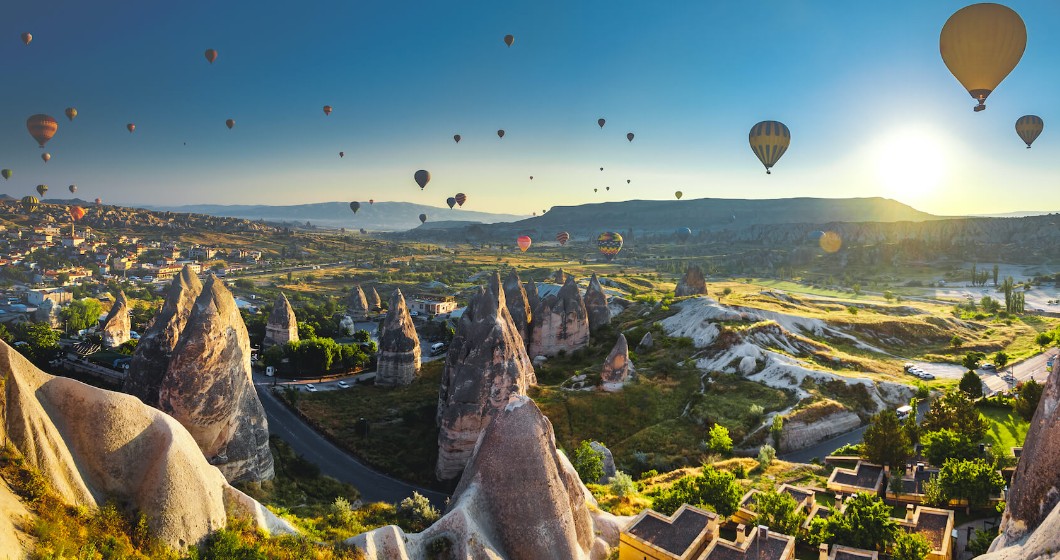
10:00 - At the sprawling open-air museum of Göreme, declared a UNESCO World Heritage Site in 1985, explore churches, living quarters of monks, including large dining areas and kitchens. It may look like all rock and stone from the outside but look closer and discover incredible riches inside. Of these, the Dark Church, also known as Karanlık Kilise, is particularly fascinating. The monastic church dating back to the 11th century is covered with brilliantly coloured frescoes depicting biblical scenes. Used briefly as a pigeon house, local farmers sealed off the entrance thus helping to preserve the priceless artworks within. Tokalı Kilise or Buckled Church is another big draw with its striking vaulted ceiling covered with brilliant blue frescoes.
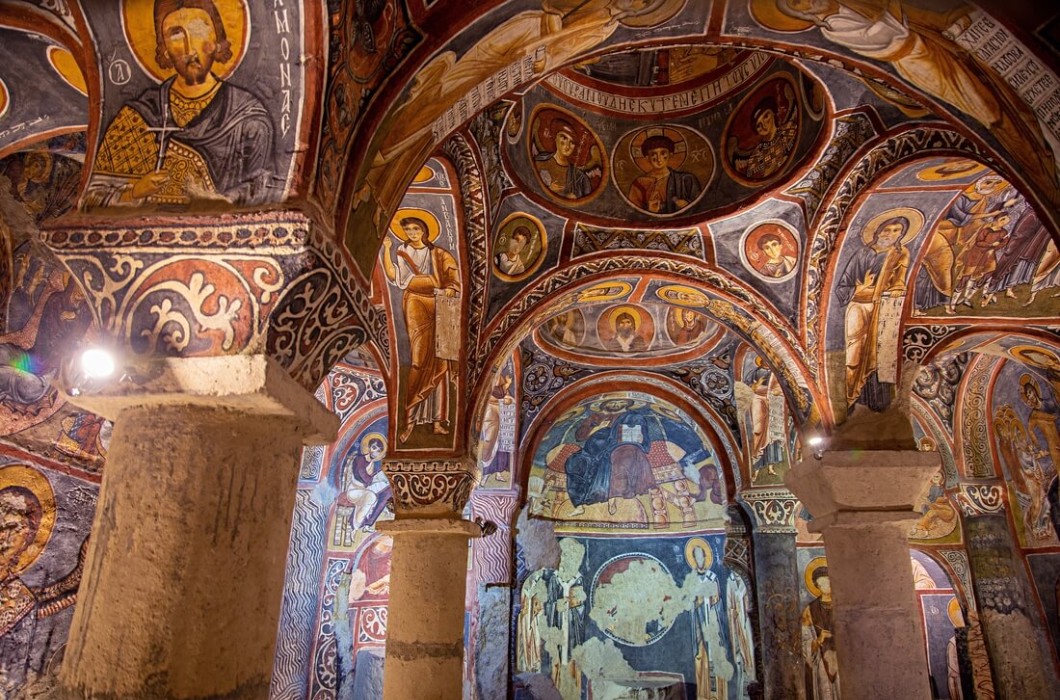
12:30 - For a much-deserved break head to Ziggy, a family run restaurant in Ürgüp. Housed in a carefully restored stone house, Ziggy is an ode to caravanserais of yore where people would meet and interact. Chef Ali Ozkan serves some classic Anatolian dishes made with local and seasonal ingredients. The special Ziggy steak comes with a pumpkin seed sauce and side of bulgur. Their cigar shaped boreks filled with cheese or pastirme (sun-dried spiced beef); and onions stuffed with rice and garnished with fresh dill are highly recommended.
---copy-6i15be.jpg)
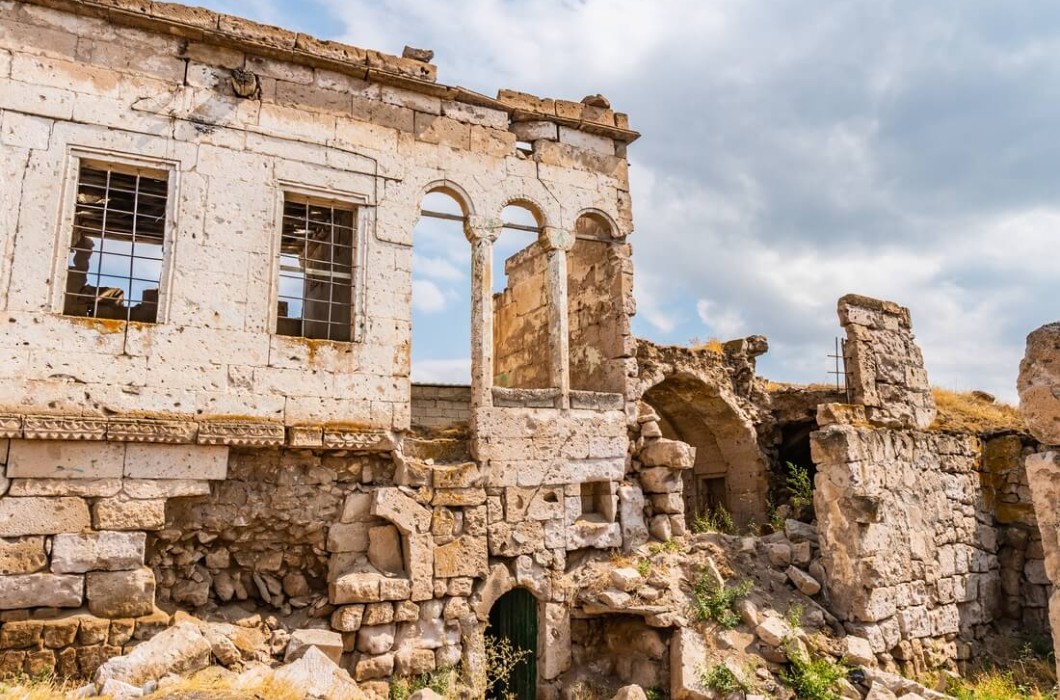
15:00 - Just when you thought you had seen it all, Cappadocia throws up more surprises. The underground cities of Derinkuyu and Kaymakli are easily the region’s most mind-boggling man-made wonders. Of the two, Kaymakli is easier to visit and far less crowded. Shrouded in legends and lore, it’s believed that early Christians used to hide here to protect themselves from attackers. Descend into its depths and discover an entire city split over eight levels, four of which are open to visitors. Tunnels lead to living chambers, complete with kitchens, wine cellars, oil presses and barns. An astounding 3,500 people lived here at one time. A nine-kilometre-long tunnel connects Derinkuyu to Kaymakli.

17:00 - Explore the charming town of Mustafapasa renamed in honour of Mustafa Kemal Atatürk, the founder of the Republic of Turkey. Back in the day it was known as the Greek village of Sinasos as it was home to a large population of Greek traders. Today, the town offers a glimpse into Anatolian village life. In the tree lined town square, dominated by the 19th-century Church of Constantine and Helen, watch old men playing backgammon over cups of Turkish tea. Wander through streets snaking out from the centre to see beautiful homes or konaks, some with intricate woodwork and painted façades. After all that walking, take a break at the delightful Old Greek House, now the home of the Öztürk family. The building, dating back to 1879, has two floors, 15 rooms and a large courtyard that functions as a restaurant. Cap a visit to Cappadocia with a meal of testi kebab or pottery kebab where meat, tomatoes, onions, and peppers are cooked along with spices inside a pot sealed with dough. Watching the servers expertly cut the neck of the stout pot with a knife and pour out the succulent pieces of meat is food theatrics at its best, and a fitting finale to this land of unbelievable wonders.









